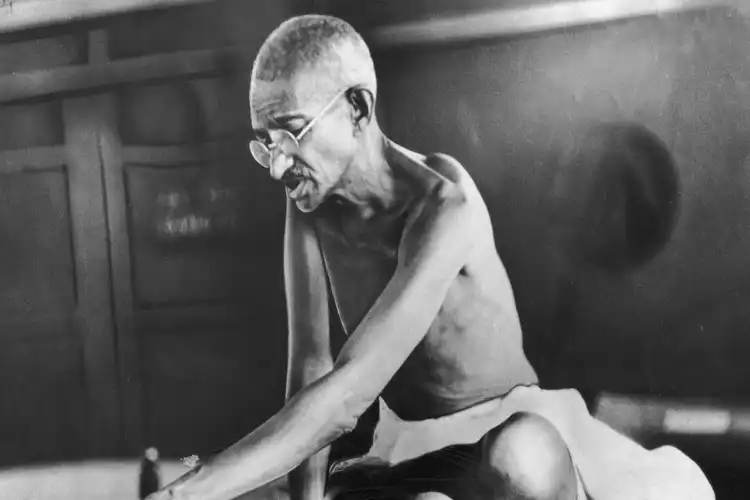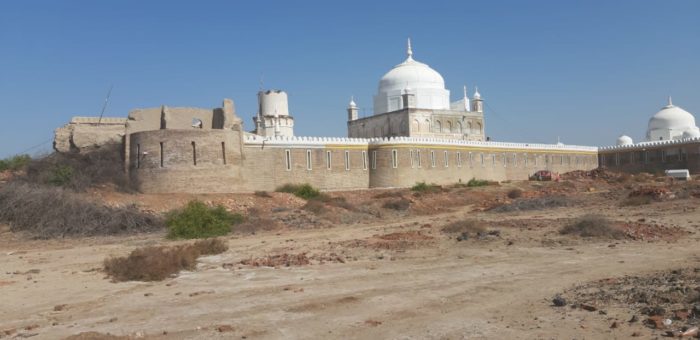Saquib Salim
"Gandhi has telegraphed congratulating Pir on being the first man to be arrested in consequence of a non-cooperation movement applauding his decision not to make any defence.” The secretary to the Government of Bombay wrote to the Secretary of the Government of India on 6 August 1920.
A Slice Of History
The nationalist historiography has kept Pirs, Sufis, Islamic Scholars, Pujaris, Hindu Scholars, and other religious leaders at its margins. While Mahatma Gandhi remained a central figure, several people who played pivotal roles in organizing masses into a non-violent movement had been left out of the historical narratives, let alone the people who violently fought the British.
The Pir mentioned was Pir Mahbub Shah of Sindh. His elder brother Pir Jhandewala Rashidullah was one of the main plotters of the Silk Letter Conspiracy which tried to overthrow British rule with the help of foreign armies during the First World War. When the non-cooperation movement was launched in 1920 in the aftermath of the Jallianwala Bagh Massacre, Pir Mahbub was the first important person to be arrested. Pir was arrested on 1 August 1920, for delivering an anti-British speech in Hyderabad (Sindh).
Pir was reported to have said in a public meeting, “My life is ready (for sacrifice). I am prepared to make war and give my head willingly....... we will not let our enemies rule in peace. Don’t think that no Hindu is united with us.
They also are with us.”
Luwari Sindh dargah
While arresting him the provincial government wrote to the Secretary in Delhi that “the man is practically worshipped by thousands”. A government report noted that he “exhorted villagers to subscribe money to carry on war against the British” and was “more hostile to Government and more bigoted than Pir Jhandewala himself”. District Magistrate of Hyderabad (Sindh) reported, “Pir Mahbub Shah was the most dangerous and fanatic man in the district”.
Pir was sentenced to two years of imprisonment on 5 August and he started a hunger strike against it. A religious leader with lakhs of followers was on a hunger strike. The government didn’t know how to handle this. One report mentions, “he knows he has the sympathy of the people with him; there was nearly a riot when he was arrested”.
The Viceroy told the government to force-feed him with caution that it might not kill the Pir. Viceroy said, “I regard the release of this man as dangerous and could not agree to any such course”. One course given was that of sending him to exile to Yemen. Rather, most officials believed that exiling him to Yemen is the best possible way to deal with him.
On 15 August, after much deliberations, Pir was released. The British claimed that he had apologized and hence pardoned him. Pir and his followers did not accept this narrative and interestingly, these same people kept on violently fighting the British till 1947.
It is even more interesting that this was not the first time the Pirs of Sindh colluded with Gandhi. Pirs of Sindh were the first leaders in India to support Gandhi. In March 1916, Gandhi went to Sindh to meet Pir of Luwari because “he had heard of the Pir through certain Memon murids, who were clients of his in South Africa, and recently followers of the Pir at Porebunder had given him to understand that the Pir invited him to his place”.
CID reported, “in the evening the interview (of Gandhi) with the Pir took place in an inner chamber. The only other person allowed to be present was an aged body servant of the Pir— possibly Khalifa Haji Mehmud. The interview lasted for about 20 minutes.” After the meeting, Pir instructed his followers “not to have any dealings with the English, nor to buy English goods”. After this Gandhi met Khwaja Mohammad Ashraf, another Pir, and Pir Bhawanshah, where he was asked to start a movement like South Africa in India.
One year later, in March 1917, the Pir of Luwari again gave a scare to the British. CID reported to higher officials, “It is an extraordinary fact that when Mr. Gandhi, who is a Brahmin, was in Sind about a year ago he paid a visit to one of the big Muhammadan Pirs in the Hyderabad (Sindh) District. It is a still more extraordinary fact that this Pir, whose ancestral tradition is never to leave his mud fort except to go on pilgrimage to the Hedjaz, arrived in Karachi last evening by the same train as Mr. Gandhi, accompanied by a large number of followers.”
The British believed that Gandhi and Pir traveling by the same train was more than a coincidence and “it appears to be a legitimate inference to draw from the association of Mr. Gandhi and the Pir, that an effort is being made by agitator class to join up the Hindu and Muhammadan forces of unrest in this Province.”
Today these Pirs of Sindh are either absent or on the margins of our history books.


